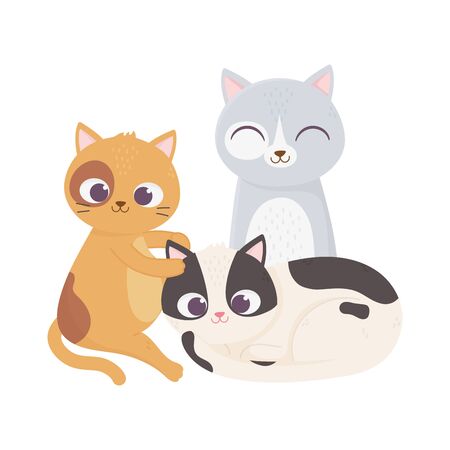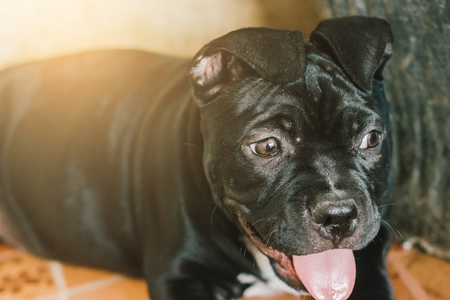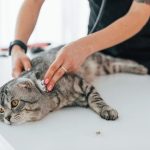1. Understanding the Importance of Interactive Play
Interactive play is more than just a fun activity for your small pet—it’s a crucial part of their overall well-being. Engaging in play helps keep your pet physically active, mentally stimulated, and emotionally connected to you. Whether you have a rabbit, guinea pig, hamster, or ferret, regular interactive play can make a big difference in their quality of life.
Why Interactive Play Matters
Small pets may not need long walks like dogs, but they still require mental and physical stimulation to stay healthy. Without proper engagement, they can become bored, stressed, or even develop behavioral issues. Here’s why interactive play is so important:
| Benefit | Description |
|---|---|
| Physical Health | Encourages exercise, preventing obesity and related health issues. |
| Mental Stimulation | Keeps your pet’s mind active, reducing stress and anxiety. |
| Bonding Opportunity | Strengthens the relationship between you and your pet through shared activities. |
| Prevents Boredom | Reduces destructive behaviors caused by lack of stimulation. |
How Play Strengthens Your Bond
Spending time playing with your pet helps build trust and strengthens your connection. Many small animals are naturally cautious around humans, but interactive play gives them a chance to associate you with positive experiences. Over time, this builds confidence and deepens the bond between you and your furry friend.
Signs Your Pet Enjoys Playtime
Not sure if your pet is benefiting from play? Look for these signs:
- Excited Movements: Bouncing, hopping, or running around eagerly.
- Engaged Behavior: Actively interacting with toys or responding to your actions.
- Relaxed Body Language: Showing comfort and curiosity rather than fear.
- Seeking More Interaction: Returning to play after short breaks.
Making Playtime a Routine
The key to successful interactive play is consistency. Set aside time each day for engaging activities that match your pet’s personality and energy level. Even just a few minutes of dedicated play can make a significant impact on their happiness and well-being.
By understanding the importance of interactive play, you’ll not only help keep your small pet healthy but also create a stronger and more trusting relationship with them. Stay tuned for more interactive play ideas that will keep both you and your pet engaged!
DIY Toy Ideas for Affordable Fun
Keeping your small pet entertained doesn’t have to be expensive. With a little creativity, you can make fun and engaging toys using household items and safe materials. DIY toys not only save money but also allow you to customize playthings that suit your pet’s preferences.
Easy DIY Toy Ideas
Here are some simple and budget-friendly toy ideas that your small pet will love:
| Toy Idea | Materials Needed | Description |
|---|---|---|
| Cardboard Tunnel | Cardboard boxes, tape (pet-safe) | Create a fun tunnel by connecting cardboard boxes together. Cut openings on the sides for extra entrances. |
| Paper Roll Treat Puzzle | Empty toilet paper rolls, hay, treats | Stuff a toilet paper roll with hay and hide small treats inside for an interactive snack time. |
| Sock Ball | An old clean sock, crumpled paper | Place crumpled paper inside a sock and tie a knot at the end to create a soft, chewable ball. |
| Popsicle Stick Ladder | Popsicle sticks, non-toxic glue | Create a small ladder or bridge for climbing pets like hamsters or mice. |
Safety Tips for DIY Pet Toys
No matter what type of toy you create, always ensure they are made from pet-safe materials. Avoid anything with small, sharp parts or toxic adhesives. Regularly inspect homemade toys for wear and tear to prevent accidental ingestion or injury.
The Benefits of DIY Toys
Dedicating time to making toys for your pet not only saves money but also strengthens your bond. Watching them explore and enjoy their new playthings is a rewarding experience that enhances their well-being and happiness.

3. Training Games to Enhance Communication
Training-based play activities are a great way to strengthen your bond with your small pet while encouraging learning and improving communication. These games provide mental stimulation, build trust, and make interactions more engaging.
Clicker Training for Small Pets
Clicker training is an effective method that helps pets associate positive behaviors with rewards. Using a small handheld clicker, you can reinforce good behavior with a distinct sound followed by a treat.
How to Start Clicker Training
- Introduce the Clicker: Click the device and immediately give your pet a treat. Repeat this step several times so they associate the sound with rewards.
- Choose Simple Commands: Start with basic actions like “come” or “touch” and reward your pet when they respond correctly.
- Be Consistent: Always use the same command and reward system to reinforce learning.
Target Training for Engagement
Target training involves teaching your pet to follow or touch a specific object, like a small stick or your hand. This game improves focus and responsiveness.
Steps for Target Training
- Select a Target: Use a small object, such as a chopstick or your finger.
- Encourage Interaction: Hold the target near your pets nose and wait for them to touch it.
- Reward Immediately: Once they touch the target, give them a treat and repeat the process.
- Add Movement: Gradually move the target farther away to encourage them to follow it.
Puzzle Games for Problem-Solving
Puzzle games challenge your pets intelligence while reinforcing communication skills. You can use homemade or store-bought puzzles to keep them engaged.
Easy DIY Puzzle Ideas
| Puzzle Type | Description |
|---|---|
| Treat in a Box | Place treats inside a small box with holes and let your pet figure out how to retrieve them. |
| Cup Shuffle Game | Hide a treat under one of three cups and shuffle them around for your pet to find. |
| Treat Towel Roll | Wrap treats inside a rolled-up towel and encourage your pet to unroll it. |
The Importance of Positive Reinforcement
Praise, treats, and gentle encouragement are essential when playing training games with your small pet. Positive reinforcement builds confidence and helps create a strong, trusting relationship between you and your furry friend.
Quick Tips for Effective Training Sessions
- Keep Sessions Short: Small pets have short attention spans, so limit training to 5-10 minutes per session.
- Avoid Overfeeding Treats: Use tiny portions or healthy snacks to prevent overfeeding.
- Stay Patient: Every pet learns at their own pace, so be patient and celebrate small successes.
By incorporating these training games into playtime, you can create meaningful interactions that enhance communication and strengthen your bond with your small pet. Engaging in these activities regularly will keep them mentally stimulated, happy, and eager to learn!
4. Enrichment Activities for Mental Stimulation
Keeping your small pet mentally engaged is just as important as physical exercise. Enrichment activities can help prevent boredom, reduce stress, and encourage natural behaviors like problem-solving and foraging. Here are some fun and creative ways to challenge your pet’s intelligence.
Puzzle Toys
Puzzle toys are a great way to engage your pet’s mind while rewarding them with treats. You can find store-bought puzzle feeders or create DIY versions using household items.
DIY Puzzle Toy Ideas
| Puzzle Idea | How to Make It |
|---|---|
| Treat-Filled Toilet Paper Roll | Place small treats inside an empty toilet paper roll, fold the ends, and let your pet figure out how to get the treats out. |
| Muffin Tin Challenge | Put treats in some of the muffin tin cups and cover all cups with balls or crumpled paper. Your pet must move the obstacles to find the treats. |
| Hidden Treat Boxes | Use small cardboard boxes with holes and hide treats inside. Your pet will need to sniff, push, or chew their way to the reward. |
Obstacle Courses
An obstacle course helps your small pet stay active while also engaging their brain. You can set up simple courses using tunnels, ramps, or even household objects like books and boxes.
Tips for Creating an Obstacle Course
- Start simple: Use low hurdles and short tunnels before increasing difficulty.
- Add variety: Incorporate different textures and heights to keep it interesting.
- Use treats as motivation: Encourage your pet to complete the course by placing small rewards at key points.
- Create a safe space: Ensure there are no sharp edges or hazards that could harm your pet.
Foraging Games
Mimicking natural foraging behavior is an excellent way to stimulate your pet’s brain. Hide food in different areas or use special foraging mats to make mealtime more engaging.
Fun Foraging Game Ideas
- Treat Scavenger Hunt: Hide small treats around a play area and let your pet sniff them out.
- Digger Box: Fill a shallow box with shredded paper or hay and scatter treats inside for your pet to find.
- Sensory Tray: Use a tray filled with different materials like crinkled paper, soft fabric, or smooth stones, hiding treats among them for exploration.
Mental stimulation through these enrichment activities not only keeps your small pet entertained but also strengthens their bond with you. Try different games and puzzles to see what they enjoy most!
5. Supervised Outdoor Play and Exploration
Introducing your small pet to the great outdoors can be an exciting experience for both of you. Fresh air, natural textures, and new sights and sounds provide mental stimulation and physical exercise. However, outdoor play must be carefully supervised to ensure safety. Here’s how you can create a secure and enriching outdoor environment for your furry friend.
Preparing Your Pet for Outdoor Adventures
Before taking your small pet outside, it’s important to ensure they are comfortable and prepared. Not all small animals are suited for outdoor play, so consider their species, personality, and overall health before proceeding.
Steps to Introduce Your Pet to Outdoor Play
| Step | Description |
|---|---|
| 1. Choose a Safe Location | Select a quiet, enclosed space such as a fenced yard or a pet-safe playpen. |
| 2. Use a Secure Harness or Carrier | If your pet is comfortable with a harness, use one designed for their size to prevent escape. |
| 3. Start with Short Sessions | Allow your pet to explore in short increments to build confidence. |
| 4. Monitor the Environment | Avoid toxic plants, predators, and extreme weather conditions. |
| 5. Provide Shelter and Shade | If outdoors for extended periods, ensure access to shade and fresh water. |
The Benefits of Outdoor Exploration
A well-supervised outdoor experience provides numerous benefits for small pets:
- Mental Stimulation: New scents, sounds, and textures engage their senses.
- Physical Exercise: Running, hopping, or burrowing helps maintain healthy activity levels.
- Social Interaction: Some pets enjoy observing nature or interacting with other household pets under supervision.
- Sensory Enrichment: Grass, soil, and fresh air offer a different environment from indoor spaces.
Troubleshooting Common Outdoor Challenges
If your pet seems nervous or hesitant about outdoor play, try these solutions:
- Nervous Behavior: Start by bringing familiar toys or treats outside to make them feel more secure.
- Tendency to Hide: Use a covered playpen or partially enclosed space where they can retreat if needed.
- Eager to Escape: Always supervise closely and use appropriate barriers or leashes.
- Sensitivity to Temperature: Avoid extreme heat or cold; play during mild weather conditions.
Create an Engaging Outdoor Play Routine
Your small pet may take time to adjust to outdoor environments, but with patience and consistency, they can enjoy safe exploration. Whether it’s lounging in the grass, digging in soft dirt, or hopping around a secure enclosure, supervised outdoor play is a great way to strengthen your bond while providing enrichment.


